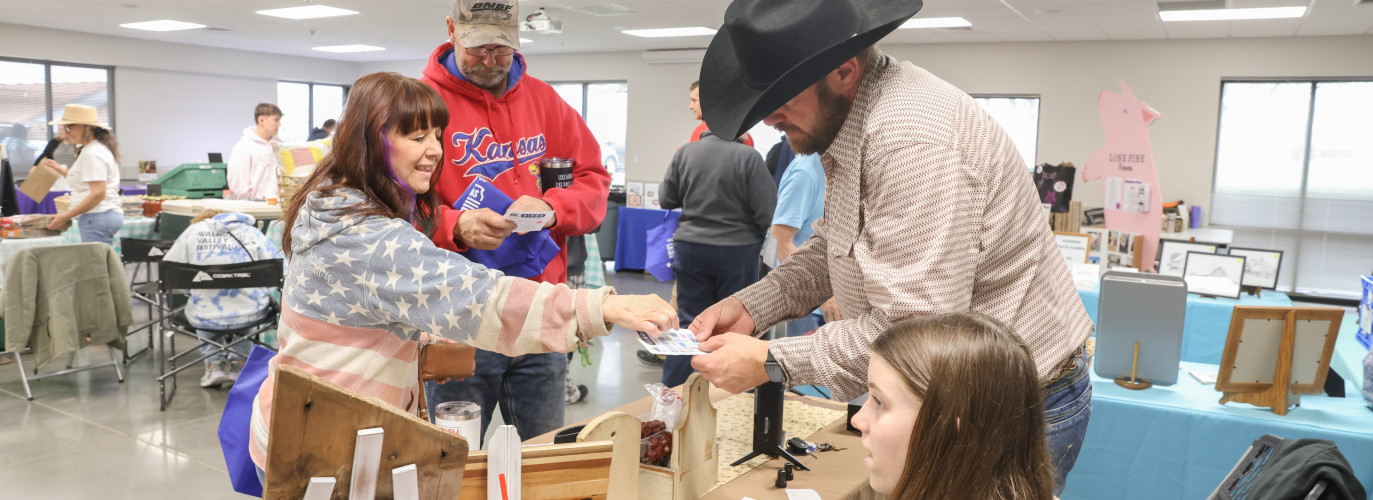Apr 23, 2025

By Rick McNary
Recent pauses in government grant funding — which helps food banks buy food from local farmers — have left many growers facing tough challenges. Growers had purchased machinery and planted crops in anticipation of a profitable harvest; they had purchased equipment to help them process the crops such as freezers and cool storage; some had taken out loans on buildings and vehicles to distribute their products.
They began this in anticipation of funding that suddenly vanished. But the crops keep growing, the bank still expects payment on loans for machines and the people who would have received that local food are left without it. Here is where you and I can step in to help.
If you were ever interested in supporting local, now is the time to do it, not just as a popular culture thing to “buy local,” but because many of these growers’ businesses will not survive unless we step in to purchase from them.
For those interested in turning local food production into a business rather than a hobby, it's important to understand two main market options: selling directly to consumers or selling indirectly through intermediaries.
The indirect-to-consumer model is based on high volumes with narrow profit margins. That grower raises a crop then sells it to someone else who, in turn, sells it to someone else, who, in turn, sells it to someone else. For example, a loaf of bread at the store might cost $3.50, but the farmer who grew the wheat only receives 10 to 15 cents.
Whether it’s a farmer who grows wheat, which is also called a commodity crop, or one who grows vegetables, a specialty crop, selling indirect-to-consumer means they are selling at a wholesale price, which is much less than the final retail price.
However, some growers choose direct-to-consumer sales because they have higher margins and don’t require the scale of commodity crops. Therefore, while the consumer may still pay the same amount for a loaf of bread at the grocery store or directly from a local grower, the grower keeps a larger share of the retail price.
While many people want to buy their food from local growers, access to them is not always easy. For many consumers, unless they personally know a grower and can buy directly from them, the only other option has been to drive to local farmers markets, which are only open part of the year. And, for some who live in rural areas, they might have to drive an hour or longer to attend a farmers' market. Access to local food is not always easy.
However, Shop Kansas Farms has worked for five years to make access to locally grown food easier for both the consumers and the growers. We build that bridge between the consumer and the grower in three different ways.
First, we have a website that serves like an online shopping mall: www.shopkansasfarms.com. Imagine when you use it, it’s like wandering through a big mall with various businesses, each one of them separate, yet united under one roof. Our website is like a building and houses hundreds of growers. Please note we don’t sell their products, but we give them the online space to sell them. If you, as a consumer, want to buy, you will buy directly from them. Incidentally, we don’t charge them rent! They can list on our website for free.
Second, we have the Shop Kansas Farms Facebook group, which currently has more than 169,000 followers and continues to grow each week. Most of those members are consumers who want to buy directly from local growers.
Third, we are creating hyper-local Harvest Hubs to build out the needed supply chain to benefit growers. That supply chain consists of three elements: production, processing and distribution. For many growers, the processing component such as local meat lockers and commercial kitchens/canneries is the most difficult aspect so we’re helping build those out.
Our first one is the Border Queen Harvest Hub based in Caldwell but encompasses about a 60-mile radius. One that is coming online soon is the Sedgwick County Harvest Hub. We have built these models to be replicable across the state and nation.
Our local growers need us now more than ever to purchase food raised by the wonderful farm and ranch families of Kansas. As you meet the people who grow the food you eat, you will fall in love with them. After all, these are the people who put food on our plates each day.
